When people ask what makes a Caldecott medal winner truly deserve its recognition, I point them to Peter Spier’s “Noah’s Ark” from 1978. This isn’t just a beautifully illustrated book - it’s a masterclass in visual storytelling that does something many picture books can’t. It gets better every time you read it.
“Noah’s Ark” is essentially wordless, containing only a short bible verse (“But Noah found grace in the eyes of the Lord,” Genesis 6:8) and the translation of a traditional Dutch poem. Everything else - the entire Biblical story of the flood - unfolds through Spier’s incredible detailed, expressive illustrations. But for adults used to reading words aloud, this presents an interesting challenge: how do you “read” a book that has no script?
The answer is improvisation, and it’s a skill we don’t generally practice as readers. Each time you open the book with a child, you’re essentially co-creating the story. You might focus on Noah’s building one day, the animals’ personalities another (the donkey must be pulled onto the ark, the cat hides out in the cozy chicken coop, a sloth hitches a ride on an elephant), or the family dynamics within the ark on a third reading. The book stays fresh because you’re not locked into identical repetition - you’re responding to what catches your eye and your child’s interest in that particular moment.
With my toddler, the experience is pure discovery. She delights in pointing out different animals on each page (and telling me what sounds they make), and Spier gives her plenty to find. His illustrations are packed with detail but never cluttered - each animal has distinct characteristics and expressions that invite close observation. The elephants look appropriately dignified, the monkeys mischievous, the cats aloof. She can spend long minutes studying a single spread, finding new creatures (is that a dodo bird?) or noticing how they interact with each other.
What’s remarkable about Spier’s approach is how he handles the more challenging aspects of the Noah story. The panels showing the many animals left behind - those not chosen for the ark - are genuinely heartbreaking if you’re reading with the adult awareness of what they represent. But for a young child who hasn’t yet grasped the concept of death or the finality of being left behind, those same images simply show more animals in the landscape. The story never feels devastating to her because she’s ingesting it at her developmental level, seeing adventure and animals rather than mortality and divine judgment.
Spier doesn’t shy away from the complete story, but he presents it in a way that allows each reader to engage with the level of complexity they’re ready for. A three-year-old sees a boat full of animals. A six-year-old might notice the rising water and understand danger. An eight-year-old grasps the full implications of the flood. The same book works for all of them.
The wordless format also means the book transcends cultural and linguistic barriers in a way that text-heavy books cannot. Spier’s visual storytelling is so clear and expressive that the narrative unfolds naturally regardless of the reader’s background. yet the illustrations are also deeply rooted in a specific artistic tradition - you can see the influence of Dutch Golden Age painting in his composition and attention to detail.
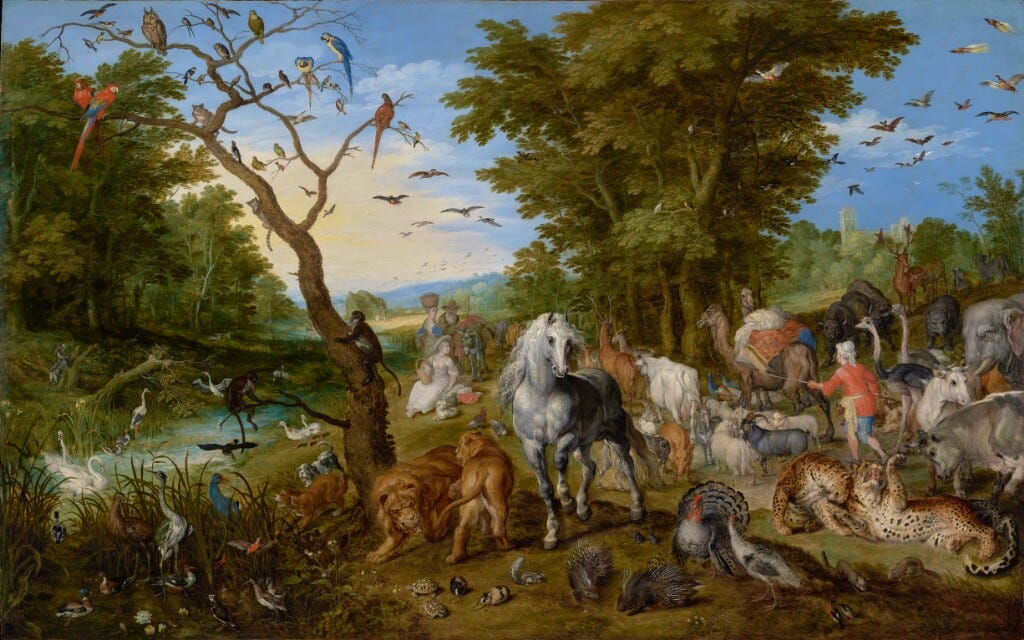
This is what separates truly excellent picture book illustration from merely decorative artwork. Spier’s images don’t just accompany a story, they are the story. Every facial expression, every carefully observed detail of animal behavior, every compositional choice moves the narrative forward. When Noah looks overwhelmed by the task ahead of him while his wife dries laundry atop the still-landbound ark, when the animals seem restless in their crowded quarters, when you notice suddenly there are puppies and colts and all the animals had babies and you realize just how much time has passed aboard the ark, when the family emerges blinking into sunlight after the flood - these emotional beats are conveyed entirely through visual storytelling.
“Noah’s Ark” also demonstrates how picture books can honor both artistic tradition and child-centered storytelling. This is a sophisticated work of art that happens to be perfectly accessible to young children. It doesn’t talk down to its audience or oversimplify its subject matter. Instead, it trusts that good visual storytelling will communicate across age groups and reading levels.
For adults concerned about reading wordless books, I’d suggest trying to embrace the uncertainty. You don’t need to narrate every detail or create elaborate dialogue. Sometimes the most powerful reading experiences come from simply looking together, letting the child guide where the story goes (try asking “what do you see?”), and discovering details you missed in previous readings. The book provides the structure, but you and your child provide the voice.
Next up: A forgotten classic that proves the best silly books take language seriously.

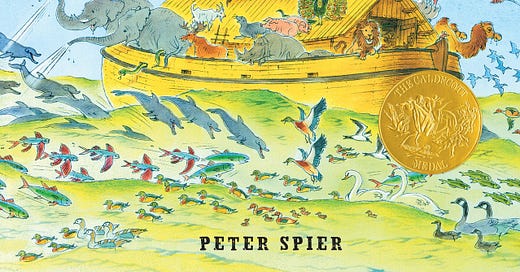



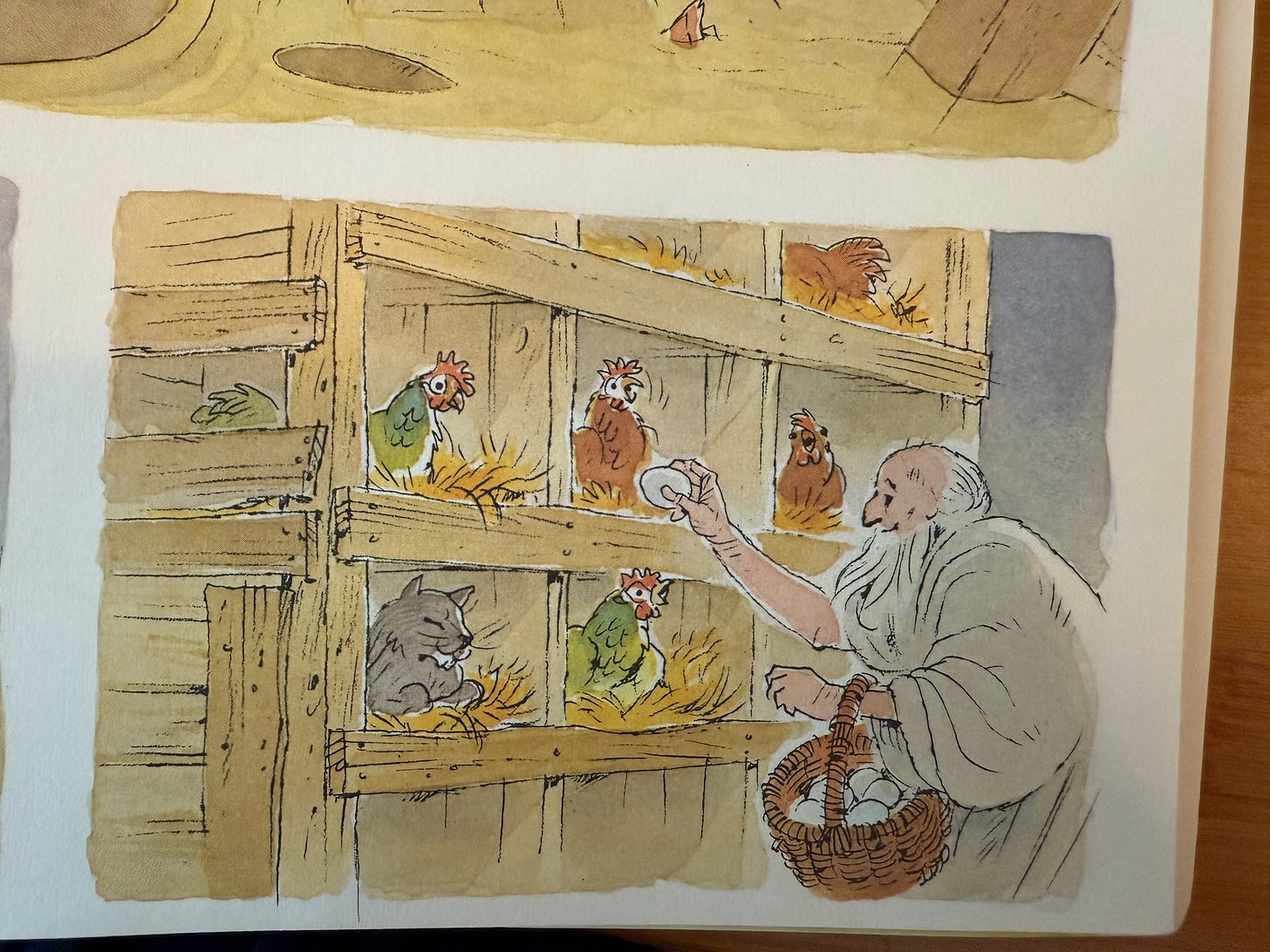
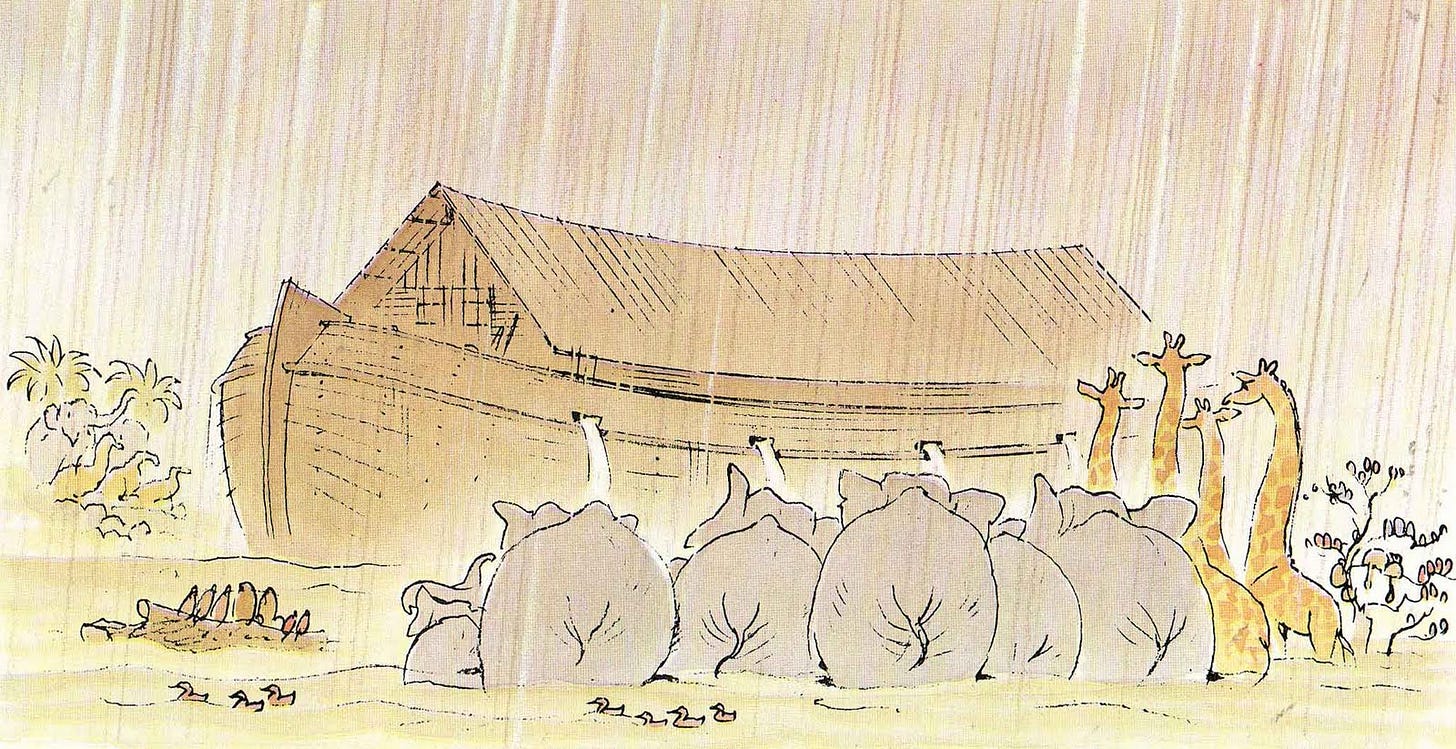
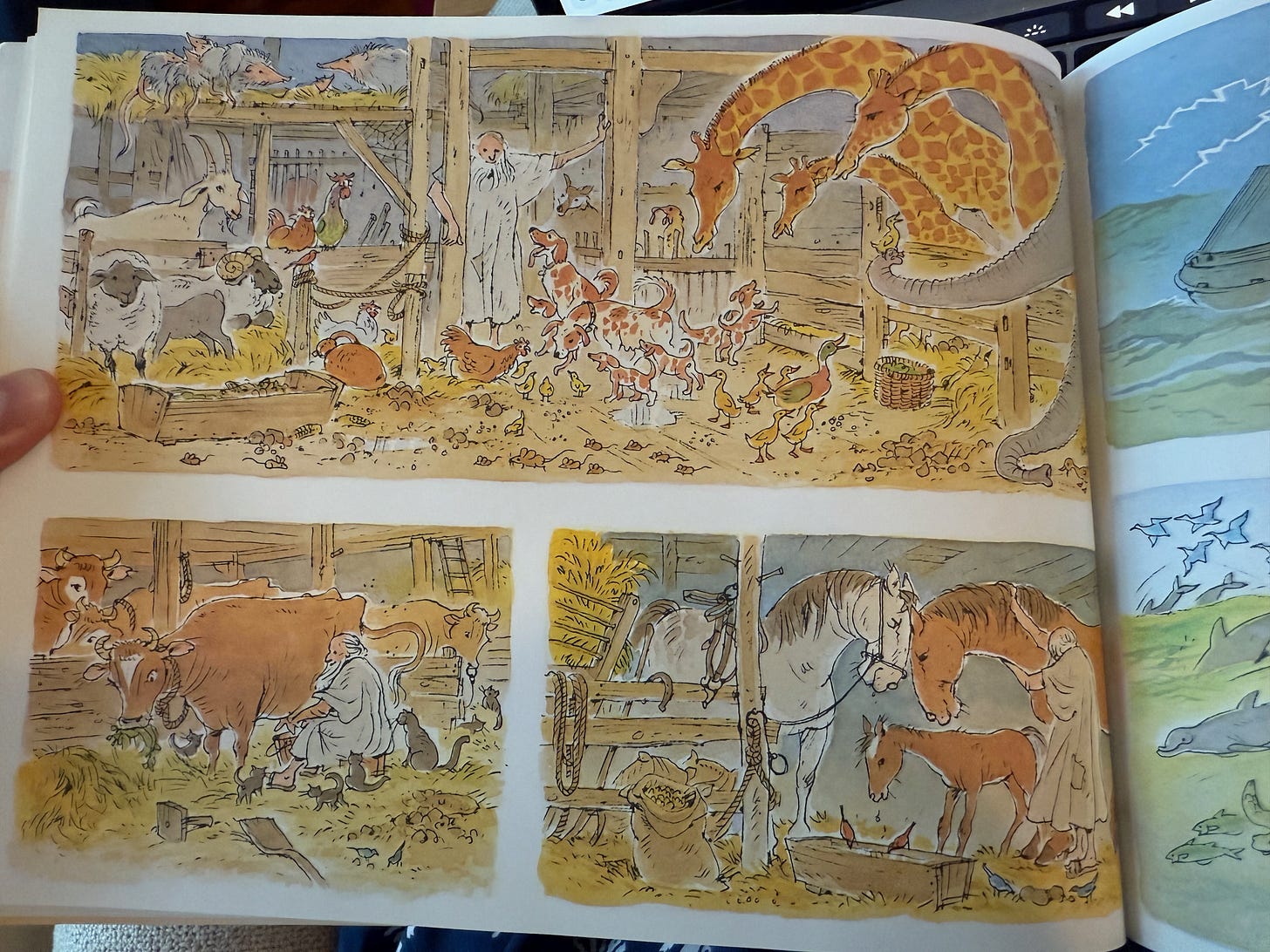
A fantastic review. Every post you make convinces me that each book is an absolute must-have for our home library--and that I ought to spend more time actually opening the books :)